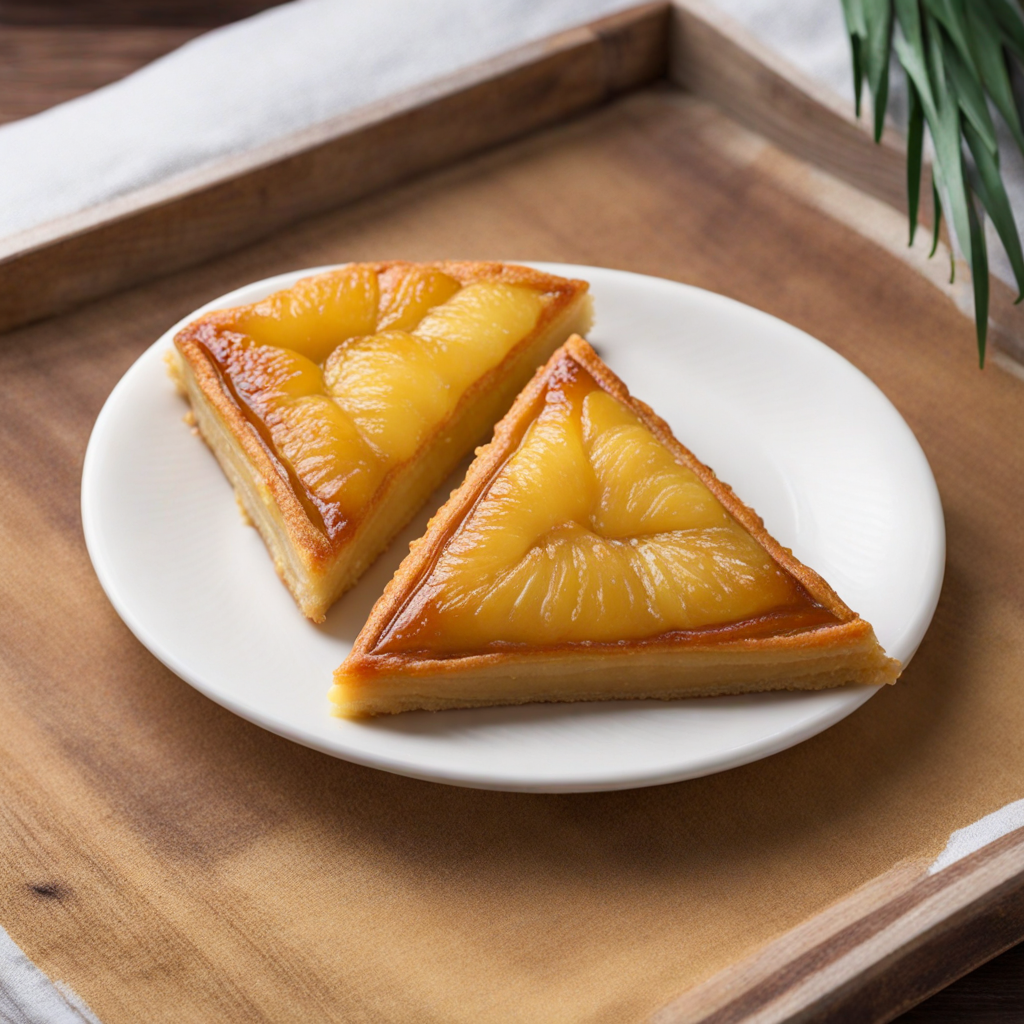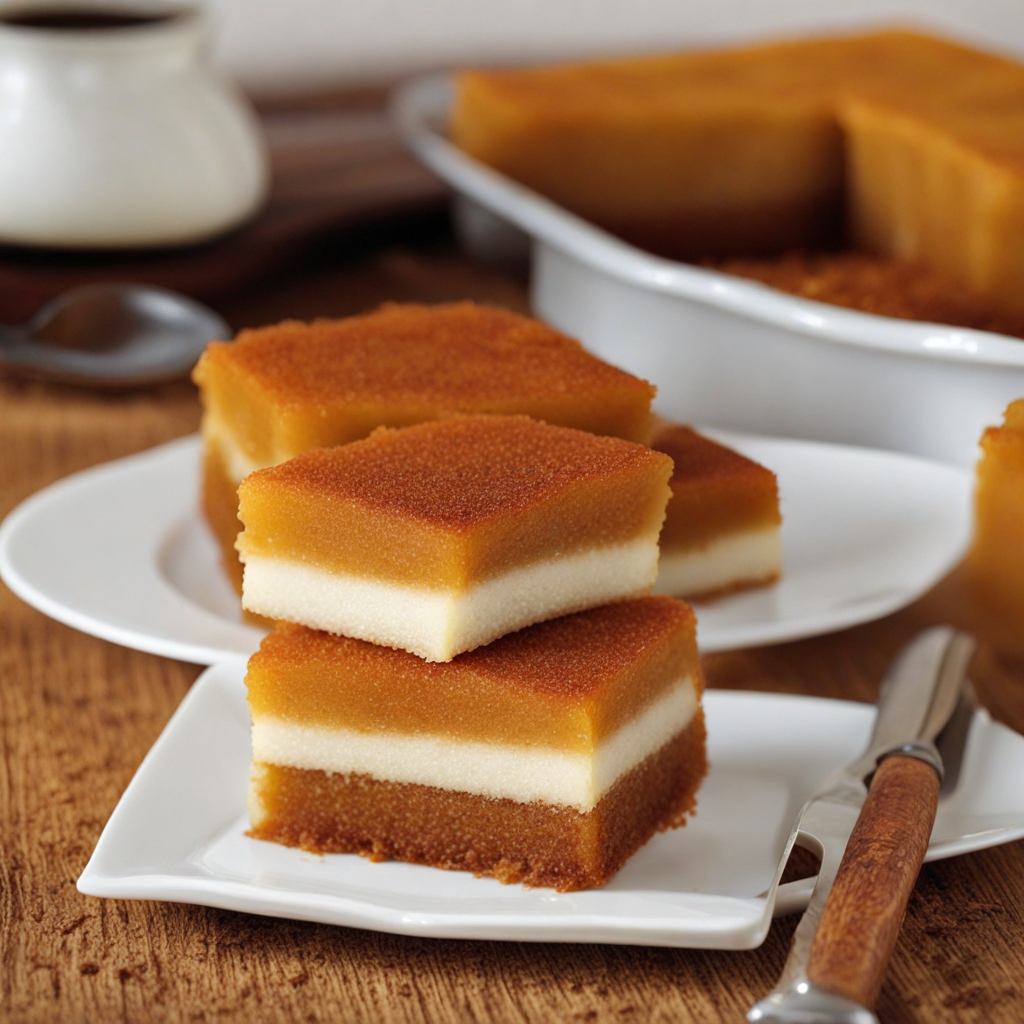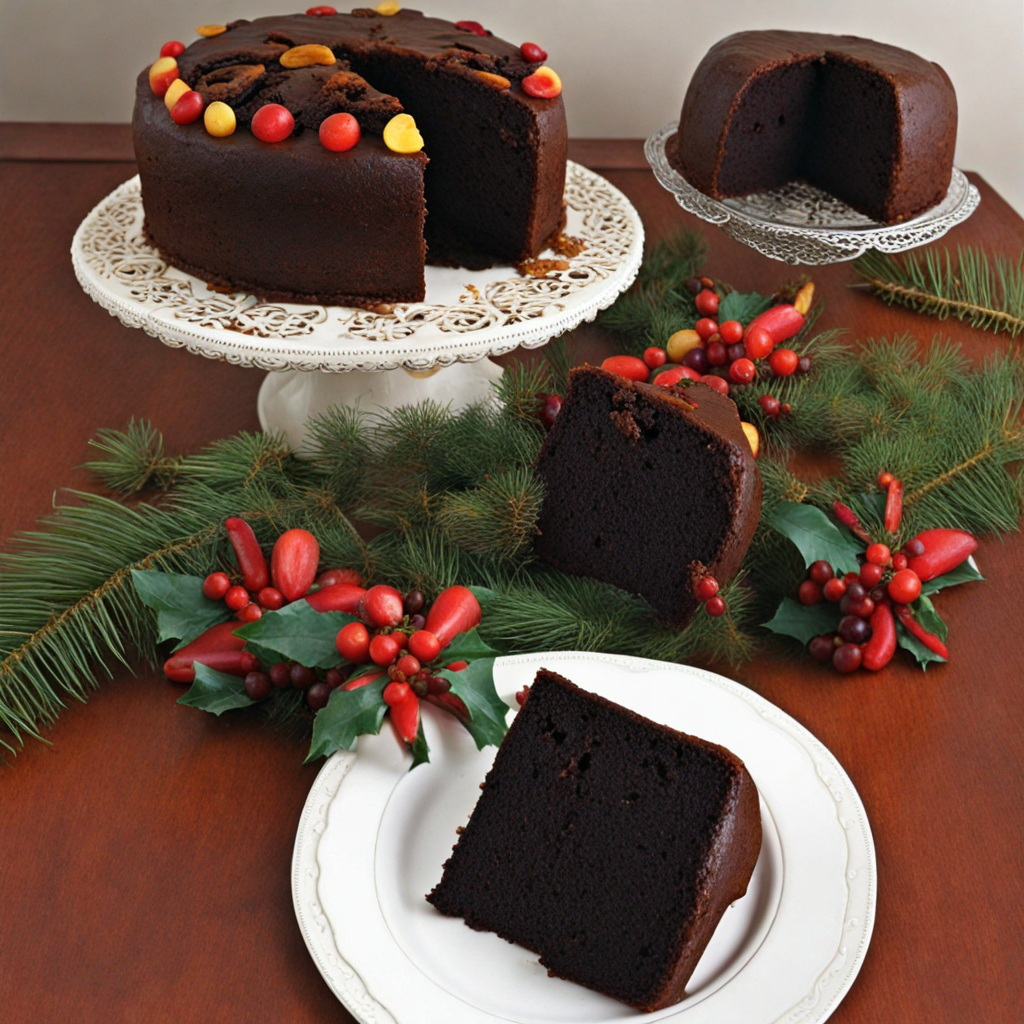Pine Tart
Pine Tart is a delightful dessert hailing from Guyana, renowned for its unique blend of flavors and textures. This traditional pastry features a buttery, flaky crust that encases a luscious filling made from ripe pineapples, sugar, and a hint of spices. The dough is typically made with a mix of flour, butter, and sometimes a touch of coconut, which adds to its richness and depth. When baked to golden perfection, the crust offers a satisfying crunch that perfectly complements the sweet, tangy pineapple filling, creating a harmonious balance of taste in every bite. What sets Pine Tart apart is its vibrant filling, which is often enhanced with ingredients like nutmeg or cinnamon to elevate the natural sweetness of the pineapple. The fruit is usually cooked down to achieve a thick, jam-like consistency, allowing the flavors to intensify. This makes the tart not only a treat for the taste buds but also a feast for the eyes, as the bright yellow filling peeks out from beneath the golden crust, inviting you to indulge. Pine Tart is more than just a dessert; it carries with it a sense of cultural heritage and community spirit, often enjoyed during festive occasions and gatherings in Guyana. The preparation of this treat is usually a labor of love, with families coming together to create their own versions, each adding a personal touch to the recipe. Whether served warm straight from the oven or at room temperature, Pine Tart promises a delightful culinary experience that showcases the tropical flavors of Guyana, making it a must-try for anyone looking to explore new and exciting tastes.
How It Became This Dish
The Pine Tart: A Slice of Guyanese Heritage Origins and Early History The Pine Tart is an iconic dessert that hails from the lush landscapes of Guyana, a nation characterized by its rich cultural tapestry and diverse culinary influences. The dessert embodies the spirit of the country, marrying indigenous ingredients with colonial legacies. The origins of Pine Tart can be traced back to the fusion of indigenous practices and European colonial influences that shaped the country's gastronomy. The primary ingredient, pineapple, is native to South America and was cultivated by the indigenous peoples long before European contact. When the Portuguese and later the Dutch arrived in the region, they encountered this exotic fruit and recognized its potential. Pineapple became a staple in local diets and was soon introduced to Europe, where it gained immense popularity. The arrival of British colonizers further influenced the culinary landscape of Guyana. They brought with them various baking techniques and recipes, leading to the evolution of local dishes, including the Pine Tart. Cultural Significance The Pine Tart is much more than just a dessert; it represents a symbol of Guyanese identity and cultural pride. The tart is often served during special occasions, family gatherings, and festive celebrations, reflecting the communal spirit of the Guyanese people. Its preparation is often a family affair, where generations come together to share recipes, stories, and laughter, preserving traditions through the act of cooking. In a multicultural society like Guyana, where East Indian, African, Amerindian, and European influences intertwine, the Pine Tart stands as a testament to the country's shared heritage. It is a dish that transcends cultural boundaries, enjoyed by people from various backgrounds, symbolizing unity in diversity. The tart is often accompanied by a cup of strong black tea or a refreshing glass of local fruit juices, further enhancing its role as a cherished part of social gatherings. Ingredients and Preparation Traditionally, the Pine Tart consists of a buttery pastry crust filled with a sweet and tangy pineapple filling. The filling is typically made from fresh pineapples, sugar, and spices such as cinnamon and nutmeg, which add depth and warmth to the dish. The pastry is made with flour, butter, sugar, and sometimes a hint of vanilla, creating a tender and flaky texture that complements the vibrant filling. The preparation of Pine Tart is an art form in itself, requiring skill and patience. The crust must be rolled out to a delicate thickness, ensuring it is neither too thick nor too thin. The pineapple filling is cooked down to a syrupy consistency, allowing the flavors to meld beautifully. Once assembled, the tart is baked until golden brown, filling the kitchen with an irresistible aroma that beckons everyone to gather around the table. Evolution Over Time The Pine Tart has evolved significantly over the centuries, influenced by changing tastes, availability of ingredients, and the introduction of modern baking techniques. In the early days, the tart was a simple yet satisfying dessert, often enjoyed by families after a hearty meal. As Guyanese society progressed, so too did the tart's complexity and presentation. With the advent of globalization and the proliferation of culinary shows and literature, many home bakers began experimenting with the Pine Tart, introducing new flavors and variations. While the classic pineapple filling remains the most beloved, modern interpretations have emerged, incorporating ingredients like coconut, guava, or even rum. These adaptations reflect a broader trend in Guyanese cuisine, where traditional recipes are reimagined to suit contemporary palates. Furthermore, the rise of social media platforms has allowed bakers and food enthusiasts to share their creations with a global audience, sparking interest in Guyanese culinary heritage. As a result, the Pine Tart has gained recognition beyond Guyana, capturing the attention of food lovers around the world. Local bakeries and restaurants have also embraced the dessert, offering it on their menus and showcasing its cultural significance. Pine Tart in Contemporary Guyana In present-day Guyana, the Pine Tart remains a beloved dessert, appearing at festivals, weddings, and national holidays. It is a staple at events such as Mashramani, the Guyanese festival celebrating the country's Republic Day, where food plays a central role in the festivities. The tart is often featured alongside other traditional dishes, such as pepperpot and black cake, showcasing the diverse flavors of Guyanese cuisine. Moreover, the Pine Tart has found its way into the hearts of diaspora communities, who carry the flavors of their homeland to new countries. For Guyanese living abroad, the act of baking Pine Tart is a nostalgic journey, a way to reconnect with their roots and share their culture with the next generation. This has led to the establishment of online communities and cooking classes dedicated to preserving and sharing traditional Guyanese recipes, ensuring that the legacy of the Pine Tart endures. Conclusion The Pine Tart is more than a mere dessert; it is a culinary emblem of Guyana's history, culture, and collective identity. Its origins reflect a blend of indigenous and colonial influences, while its evolution speaks to the resilience and creativity of the Guyanese people. As the tart continues to be embraced and reimagined, it remains a cherished part of Guyanese life, a sweet reminder of home, heritage, and the joy of sharing food with loved ones. In every bite of Pine Tart, one can taste the essence of Guyana—its vibrant history, its rich cultural fabric, and the enduring love for family and tradition. Whether enjoyed at a festive gathering or a quiet evening at home, the Pine Tart is a celebration of the flavors and stories that define this remarkable Caribbean nation.
You may like
Discover local flavors from Guyana







